There’s a famous statistic that shows fewer than 3 percent of private businesses will make it to the third generation. That means a family business going strong as the fifth generation enters it has really defied the odds.

|
| Pick up EXCLUSIVE content here! |
John A. Dalsin & Son has been a family owned and family run roof-contracting firm for more than 100 years. The company has done more than simply survive during that time; it has earned the trust of its customers and the respect of the entire roofing industry. The company’s longstanding reputation for quality workmanship and professional integrity has also resulted in it being named Roofing Contractor’s 2012 Commercial Roofing Contractor of the Year.
Bob Dalsin, the president of John A. Dalsin & Son, says the success of the company boils down to one thing: its people. “Without them, the company wouldn’t be anywhere,” he said. “The good work they do gets us more work, and they are very knowledgeable, very capable, very committed. We’re just committed to making sure the job is going to work and it’s done right. We don’t want to be involved in a mistake or a failure. We have good people who believe in that, and we stick to that, so it’s easy to sleep at night.”
Headquartered in Minneapolis, Minn., the union shop has about 100 employees. The primary focus is on commercial roofing and sheet metal work —the majority of it roof replacement — along with a little high-end residential work. The company is broken down into seven divisions: new construction — built-up; new construction — single ply; re-roofing — built-up; re-roofing — single ply; service and repair; sheet metal; and residential.
The company is a member and strong supporter of the National Roofing Contractors Association (NRCA), the Midwest Roofing Contractors Association (MRCA) and Twin Cities Roofing Contractors Association, and Bob Dalsin is a past president of all three organizations. In 1993 he received the MRCA’s James Q. McCawley award, the organization’s highest honor, for outstanding contributions to the roofing industry.
The company’s commitment to quality is essential in a market like the Twin Cities, according to Bob Dalsin. “We’re probably the coldest major city in the United States, so the roofs we put on have to be able to withstand the winter, and the work has to be done during the non-winter season because you can’t do much in the winter if there is snow and ice up on the roof. So it’s a very limited season, and very challenging to find roofs that can stand up to the ice and snow and cold of winter, as well as the heat that can come in the summer. We have probably more variance from the low temperatures to the high temperatures than any part of the country. So our roofs have to be designed better and put on better than in other parts of the country.”
Company History
The company’s roots have always been in South Minneapolis. It all started in 1912, when John A. Dalsin, Bob’s grandfather, decided to buy the small hardware store in which he worked. The owner had passed away, and John Dalsin purchased the business, as well as the small roofing and sheet metal business which operated out of the back of the store. “That was the beginning of John A. Dalsin & Son,” said Bob Dalsin. “It’s been a family business all the way along. My grandfather gradually expanded the roofing and sheet metal business out of the back of the hardware store, until it got so big that they had to move to a larger location about a half a block up the street.”
Business was booming, and John asked his eldest son, Russ, to come on board instead of going off to college. Looking back, Bob Dalsin believes that decision was perhaps the key to the success of the business. “One of the big steps was when my dad graduated from high school and he went to work in the business. I think he would have liked to go to college, but my grandfather needed him, so he went into the business full time, and so did his three younger brothers.”
Eventually the three brothers left, with two of them starting their own business. But the company kept growing. In 1936, John Dalsin retired after he developed Parkinson’s disease. Russ continued to grow the business, and in 1948 the company leased some railroad properties and erected a warehouse and shop. In 1954, the company sold off the hardware store to concentrate solely on roofing.
In 1964, Bob Dalsin graduated from St. Thomas University and officially came on board full time. He’d been working there most of his life. “I had worked summers as a clerk in the hardware store starting at age 11,” he recalled. “I did that for a few years. Then at 15 I started in the office, doing accounting and job costing. I worked one summer up on the roof as a roofer. I worked a summer doing sheet metal, another summer doing warehousing and truck driving, so I did a lot of different things. I was almost working full time during my last two years of college, and then when I graduated from college I really got involved in sales and estimating.”
Bob Dalsin hadn’t planned to enter the family business, but he decided to make roofing his career. “I had planned on becoming a teacher,” he said. “But since I was the third of three boys, and the other two had opted not to get involved, I decided, well, if I were a father and had sons, I’d sure want them to be involved. So I thought I would give it a try, because I’d always liked what I was doing when I worked there.”
It was a family business, but that didn’t mean there wasn’t some friction along the way. “The truth is my father and I didn’t agree on much when I started,” Bob said. “However, my dad was smart enough to put me under one of the top salesmen and just kind of leave me alone. So I worked with Wally Sherard, who trained me, and my dad had a lot of respect for him, and as a result of that it went along very well. As I got more experience and more knowledge, my dad was eventually willing to let go and let me run it.”
Bob Dalsin took over managing the company in the late 1970s and became president in 1981. “In 1975 we built a whole complex here with an office, sheet metal shop and warehouse,” he said. “That was a big milestone. I’d say the two biggest milestones were when my dad entered the business, and moving to this location and building a new complex of buildings.”
When asked about the roof on the headquarters, he replied, “It has a traditional built-up roof with the old rag felts and asphalt and gravel, and it’s been there for 37 years.”
When Bob’s sons Mike Dalsin and Jim Dalsin joined the company, they represented the fourth generation of the family to join the business. “My sons are both here and have been for quite a while,” said Bob Dalsin. “They are both in sales and estimating. And then my oldest son has two boys, one who’s a junior in college and the other a senior in high school. So they were here for the summer.”
With family members in the business, Bob Dalsin has tried to use the same approach his father used with him. “My dad and I didn’t always see eye-to-eye, but he had some very capable people here, and he let me learn so I was able to do that in a free and open atmosphere. That worked out very well,” he said. “And my sons and I, I leave them alone and let them to do what they’re doing and they are both very good at it. And I handle the management part. Different departments do their own thing, and I tend to be a hands-off manager. I want to have really good people that can do their job and do it well without me nitpicking everything they do, and I think that’s one of the things that has made us successful.”
High-Profile Projects
The company has been involved in a lot of prominent projects over the years, including Gavildae Common, St. Leo the Great Catholic Church in Minot, N.D., The Cathedral of St. Paul, St. Thomas Aquinas Chapel at the University of St. Thomas, the Ford Twin Cities Assembly Plant and the Mall of America.
The Mall of America is memorable both for its notoriety and the sheer size of the project, noted Bob Dalsin. It also had a very tight schedule. “It was really a fast-track project. We would put the roof on before they had the walls done on the outside yet, and we’d have to come back and tie it in again. And they’d be spraying the fireproofing material on the underside of the steel deck after we put the roof on — they’d be under there doing that the next day.”
The two primary roof systems installed on the $625 million, 4.2 million-square-foot complex were a fully adhered 90-mil EPDM system and a four-ply built-up roof topped by a white, granulated-surfaced cap sheet. Everything came in on time and under budget. “It was a real scheduling challenge to get everybody working together, with the right coordination and time scheduling, but it worked out great.”
Other projects that stand out include the IDS Tower, the tallest building in downtown Minneapolis when it was constructed in 1972. The company installed a hot-applied built-up roof atop the 57 story building, which was accessible only by a hoist which came up through the center of the building and a tower crane. “It took a lot of planning and scheduling to work it out, but we did it very successfully,” Bob Dalsin said.
The Nissan Plant in Smyrna, Tenn., was another challenging project. It involved the tear-off and replacement of more than 3 million square feet of roofing and took 27 months to complete. “It was hard, dirty work — coal-tar pitch with fiberglass insulation tear-off — the most difficult work you can have,” he noted. “And then you’re doing it in the Tennessee heat and humidity — it was a very, very challenging job.”
It was made even more difficult by the numerous pieces of mechanical equipment on top of the roof. “In one area of the plant the only way to replace the roof was to get down on your hands and knees and tear it off and drag it out and drag the new stuff in there. It was really brutal work, that part of it.”
Excellent Employees, Satisfied Customers
When asked what makes his company so successful, Bob Dalsin points to his company’s dedicated employees. “First of all, our people are very well trained,” he said. “They go through a union apprenticeship program, which helps a lot; they teach them the basics — even though we’ve had them on the roof for a couple of months before they start the program. And we have very skilled, experienced foremen and lead men that teach the new guys how to do it and how to do it right. So I think training and the commitment to doing it right are key. There are a lot of people who know how to do it right, but they aren’t committed to it. And I think everyone here is committed. They know if we make a mistake we have to go back and fix it.”
If something does go wrong, the company reacts quickly. “We were one of the first in this area to have a dedicated service and repair department,” Bob Dalsin said. “There’s nothing worse for an owner than to have a leak in their building and interrupt their activities. If they do get a leak, they want it fixed right away. First of all, they’d rather not have one, so that’s our first goal, when we do their roof. But if they do have one, we have dedicated repair crews that are well trained and experienced, and they go out and fix it. They get there right away and they do a terrific job with that.”
“The other thing is we communicate well,” he continued. “On every job we communicate very well with our customers. We let them know every day what our plans are, what we’re going to be doing, and if there are any issues, they can get a hold of us to take care of it. So communication is a big part, but it’s also building trust over the years. A lot of our customers are repeat customers; they come back because we’ve done a good job for them.”
Bob Dalsin likens his entire company to a large family, and he is committed to keeping workers safe on the job. “The way we make sure our people stay safe and follow our program — and we have a very comprehensive written program — is we inspect it,” he said. “Not only do our superintendents inspect the job almost every day, but we have an outside service through our association that inspects all of our ongoing jobs. They give us a report and we track it. We track our foremen, and if they have any violations they get warnings. We have progressive discipline that goes with repeated safety violations, and as a result we hardly ever have any. They know we’re committed to safety. Sometimes they say, ‘I’ve got to get more done in a day,’ and we’ll say, ‘Yes, you do, but you’ve got to do it safely.’ There’s always that conflict there, but you always have to decide in favor of safety.”
Looking back at his career, Bob Dalsin pointed to satisfied customers and energized employees as his biggest motivators. “The best thing is probably being recognized for the good jobs we do — the customers who say they like what we do for them and that we take care of them. And the people at our company — seeing them be happy and feel good about what they are doing — those are the best parts of it.”
He’s proud of his company’s achievements, but he reiterated that success in the roofing industry comes from a rather simple formula. “You need really good people — really good people who are committed to doing the job right, to doing it productively and doing it safely,” he said. “We aren’t in business just to make money. If that was all we were about, we could cut corners and do a lot of things that would be more profitable. But it’s nice to sleep at night and not have to worry about anything you did or said to somebody. It’s a good way to do business, I think.”
Click here to listen to editor Chris King's interview with Bob Dalsin, President of John A Dalsin & Son.












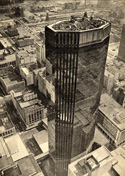
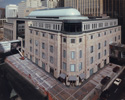

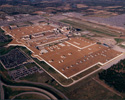
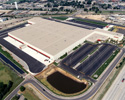
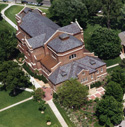
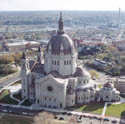
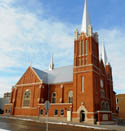

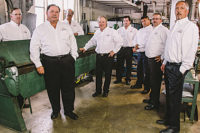
Report Abusive Comment